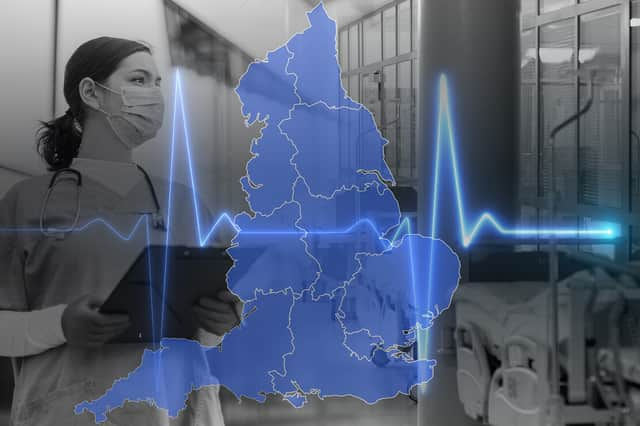NHS hospitals near me: what is A&E and ambulance waiting time at my Trust, where are worst waits in England?


NHS bodies across England warn they are dealing with their toughest winter yet. But how is the system coping on the ground?
From ambulance response times to waits for cancer care, this dashboard tracks performance across key areas and will be kept updated right throughout the 2022/23 winter.
The first table sums up the current situation at a glance. A series of charts then take you through nationwide performance across five crucial areas. Lastly, interactive tables allow you to look up the situation at your local hospital so you can see the size of the operation waiting list and more.
For a similar look at how the NHS is faring in other home nations, visit our trackers for Scotland and Wales. Northern Ireland does not produce up-to-date data about the performance of its health service.
Ambulance waits starting to improve
People have been facing record waits for ambulances this winter, but things are now starting to improve. Response times for Category 1 incidents - life threatening conditions like heart attacks - had been the highest on record in December but fell markedly in January. Highest-priority patients were still waiting 8 minutes 30 seconds on average for an ambulance – significantly longer than the seven minute target.
A&E waiting times starting to fall
There have been record waits for care at England’s A&E departments this winter. While performance is now starting to improve, it's still not meeting it's target. At least 95 per cent of A&E patients should be admitted to hospital, transferred to another provider or discharged within four hours. It’s a target which hasn’t been met since 2015.
Thousands in hospital unnecessarily
Bed-blocking - when patients are fit to leave but stuck in hospital - is a persistent problem. The issue fuels the NHS crisis by taking up valuable space on wards. It is caused when patients cannot live at home independently and are waiting for home help, equipment or a place in a care home. The knock-on effects of full wards include long waits in A&Es and queueing ambulances unable to hand over patients.
Hospital waiting lists stabilising
Waiting lists for routine hospital treatment have finally stopped rising across England, but remain at near-record levels. While the backlog is often blamed on the pandemic, waiting lists had been rising steadily for years before that. The government and NHS England have set the goal of eliminating all waits of more than a year by March 2025.
Long waits for cancer care
Many cancer patients are facing agonisingly long waits for their treatment to begin, when swift access to care is often crucial to a patient’s chances of recovery. The target is for at least 85% of cancer patients to start their first treatment within two months (62 days) of an urgent GP referral. This target was last hit in December 2015.
NHS performance in your area
Every single ambulance trust in England missed crucial waiting time targets in January, leaving critically ill patients facing record waits for care. Look up the performance of your local ambulance service in the table below.
The performance across A&E departments varies greatly. Some trusts see 100% of patients within the four-hour target, whole others don’t manage to see half of patients within that time. Look up your trust in this searchable table.
The length of waiting lists for routine hospital treatment can vary widely across different trusts. Look up the average length of the wait at your local hospital trust.
Find out how your local hospital trust performs when it comes to waiting times for cancer treatment. The target is 85% of patients to be seen within two months.
Comment Guidelines
National World encourages reader discussion on our stories. User feedback, insights and back-and-forth exchanges add a rich layer of context to reporting. Please review our Community Guidelines before commenting.
